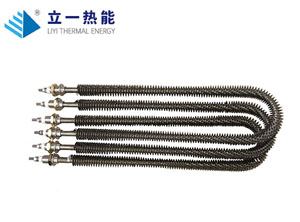Heating tubes 220V and 380V cannot be used interchangeably. This conclusion is based on multiple key factors, the reasons for which will be elaborated in detail below:
1、 Difference in resistance values
The resistance value of an electric heating tube is determined based on its rated voltage and power. Once the design is completed, the resistance value of each electric heating tube is fixed. For example, the resistance value of an electric heating tube with a rated voltage of 220V and a power of 1000W can be calculated using the formula "resistance value=voltage ²/power", which is 48.4 Ω. If the heating tube is connected to a 380V power supply, its actual power will significantly increase, far exceeding its rated power, which may cause damage to the heating tube or cause safety issues. On the contrary, if a heating tube with a rated voltage of 380V is connected to a 220V power supply, its power will significantly decrease and may not meet the expected heating demand.

2、 Matching wiring method with power supply
In practical applications, the voltage selection of the heating tube needs to be determined based on the user's power supply voltage and wiring method. For 220V heating tubes, parallel connection is usually used to connect to the 220V power supply; For 380V heating tubes, it may be possible to connect a single tube to a two-phase 380V power supply, or to connect multiple heating tubes (3 or multiples of 3) to the 380V power supply using a triangular wiring method. These different wiring methods ensure that the heating tube can operate normally at its rated voltage.
3、 Heating effect and safety
The voltage and power of a heating tube are directly related, and heating tubes with different voltages produce different amounts of heat in the same time. If heating tubes with two different voltages are used interchangeably, it will not only affect the heating effect, but may also cause damage to the equipment or pose safety hazards. For example, low-voltage heating tubes may burn out due to overheating at high voltages, while high-voltage heating tubes may not achieve the expected heating effect at low voltages.
4、 Conclusion
In summary, there are significant differences between 220V and 380V heating tubes in terms of resistance value, wiring method, heating effect, and safety, and therefore cannot be used interchangeably. When selecting and using heating tubes, it is necessary to choose the appropriate model and specifications based on the specific power supply voltage and heating requirements to ensure the normal operation of the equipment and the safety of personnel.



